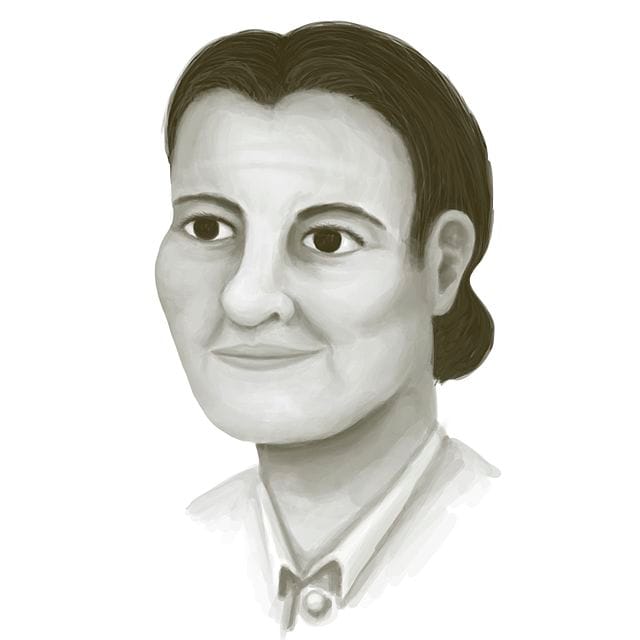Catholic Philosopher Elisabeth Anscombe was Wittgenstein’s Literary Executor
By Jennifer A. Frey at First Things

In the mid-1980s, the Catholic philosopher Elizabeth Anscombe drew up a syllabus of errors, which she delivered—rather appropriately—in Rome, to a group of moral theologians. Her syllabus consisted of twenty theses, commonly held by her fellow analytic philosophers, that she deemed “inimical to the Christian religion” and that could, she insisted, be shown “false on purely philosophical grounds.” They include:
—We are not members of a species, but “selves.”
—There are no absolute moral prohibitions.
—The laws of nature afford complete explanations of everything that happens.
Anscombe’s complete syllabus is comprehensive, comprising theses in metaphysics, psychology, ethics, semantics, and even natural theology. Nearly all of the theses pit nature—conceived as formless, and thus empty of objective meaning or purpose—against reason. Of course, this error is not unique to the analytic school, nor to the discipline of philosophy. It is simply the conceptual world we’ve inherited—the ideological air we breathe.
As a graduate student, I had Anscombe’s syllabus tacked on my office wall for two reasons: first, to remind myself why I was so invested in recondite, abstract questions about reasons and causes; second, to avoid falling into error myself. For error is the default when the vast majority of philosophers (including a great many self-described “Aristotelians” or “Thomists”) cannot adequately account for the fact that we are rational animals: creatures whose material form of life is shot through with norms that place definite and necessary limits on the imaginative possibilities for authentic human flourishing. The self-conception that pervades contemporary moral philosophy is that of the autonomous self whose freedom consists of the introduction of form into a natural world that is bereft of it. Anscombe clearly believes this is a false image of man, and much of her work sets out to attack it from different angles. Ultimately, the problem is metaphysical, which is why, in her most influential essay, “Modern Moral Philosophy,” she asks her readers to stop doing moral philosophy altogether until we have a metaphysically respectable account of human nature.
Anscombe was Wittgenstein’s most famous student as well as his literary executor. (She learned German for the sole purpose of translating his late masterwork, Philosophical Investigations, which he believed she understood better than anyone else.) Her syllabus, and her failed attempt to issue a cease-and-desist order for moral philosophy in the modern mode, kept coming to mind as I read David Goodill’s new book, Nature as Guide: Wittgenstein and the Renewal of Moral Theology. Goodill argues that Wittgenstein’s enduring legacy is the development of a form of philosophical realism that avoids pitting reason against nature. His main claim is that Wittgenstein’s philosophy helps us to overcome two central, animating dualisms of contemporary philosophy: that between reason and nature, and that between theory and practice.
One of the signal achievements of the book is Goodill’s demonstration that these two divisions are conceptually bound up and mutually reinforcing. Despite an extensive concern with Wittgenstein’s philosophy, the book’s thesis is ultimately theological. For Goodill, Wittgenstein is important insofar as the philosophical integration of reason and nature is necessary to the operations of moral theology, the principal goal of which is to provide an account of how human nature is healed, elevated, and perfected by God’s grace.



